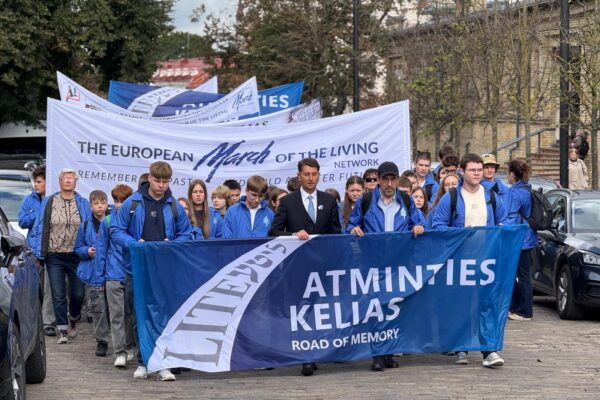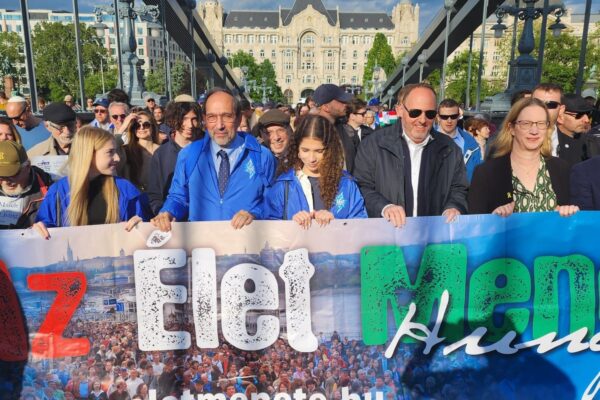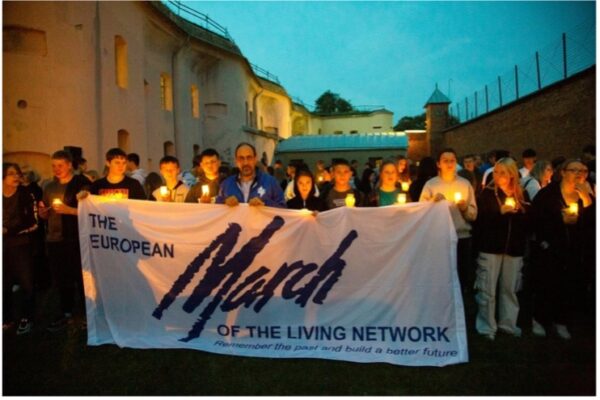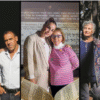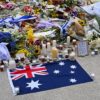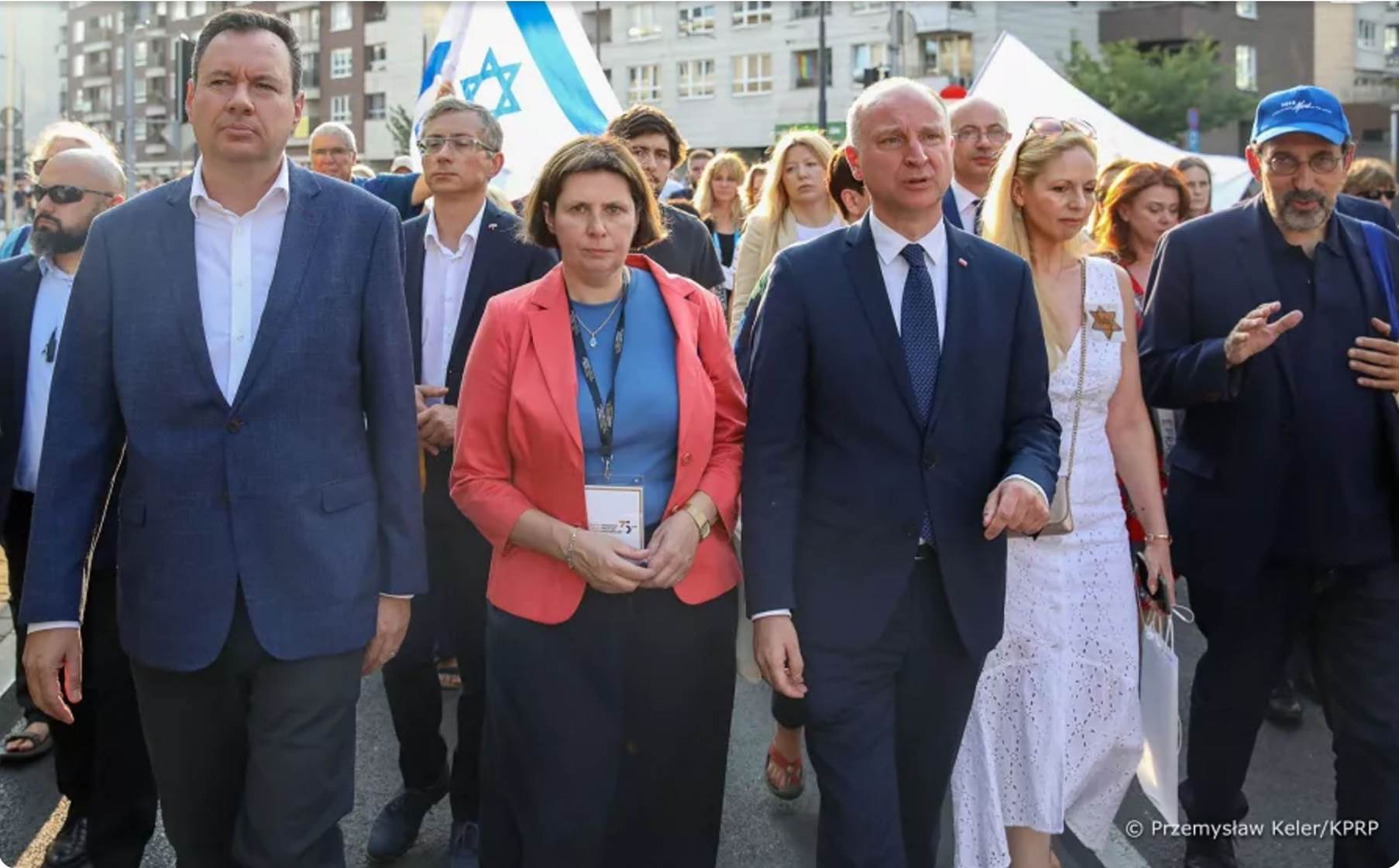
From left to right: Yacov Livne, Israel Ambassador to Poland, Monika Krawczyk (Director of JHI), Minister Wojciech Kolarski, Secretary of State in the Chancellery of the President of Poland, Ms. Rachel Kesselman (Radomsko Kesselman Museum), Michel Gourary (Director of EMOTL).
In July 2022, International March of the Living participated in three Marches and official ceremonies to commemorate the 80th anniversary of start of the murder of millions of Jews across Europe, in Latvia, France and Poland.
Since its inception in 1988, the International March of the Living, has become one of the most prominent organizations in the world involved in Holocaust commemoration and in the struggle against antisemitism, hatred and racism. March of the Living holds educational activities around the world, throughout the year, culminating with the organization’s flagship seven-day educational journey to Poland, in which millions of Jews once lived and were murdered during the Holocaust.
Dr. Shmuel Rosenman, Chair of the International March of the Living, and the President of the organization, Phyllis Greenberg Heideman, said: “We will continue to march in every place in which Jews lives and were annihilated during the Holocaust. This is our commitment to the survivors: we will continue to pass the torch of memory to the next generations.
HOLOCAUST IN LATVIA MARKED WITH SPECIAL MARCH OF THE LIVING
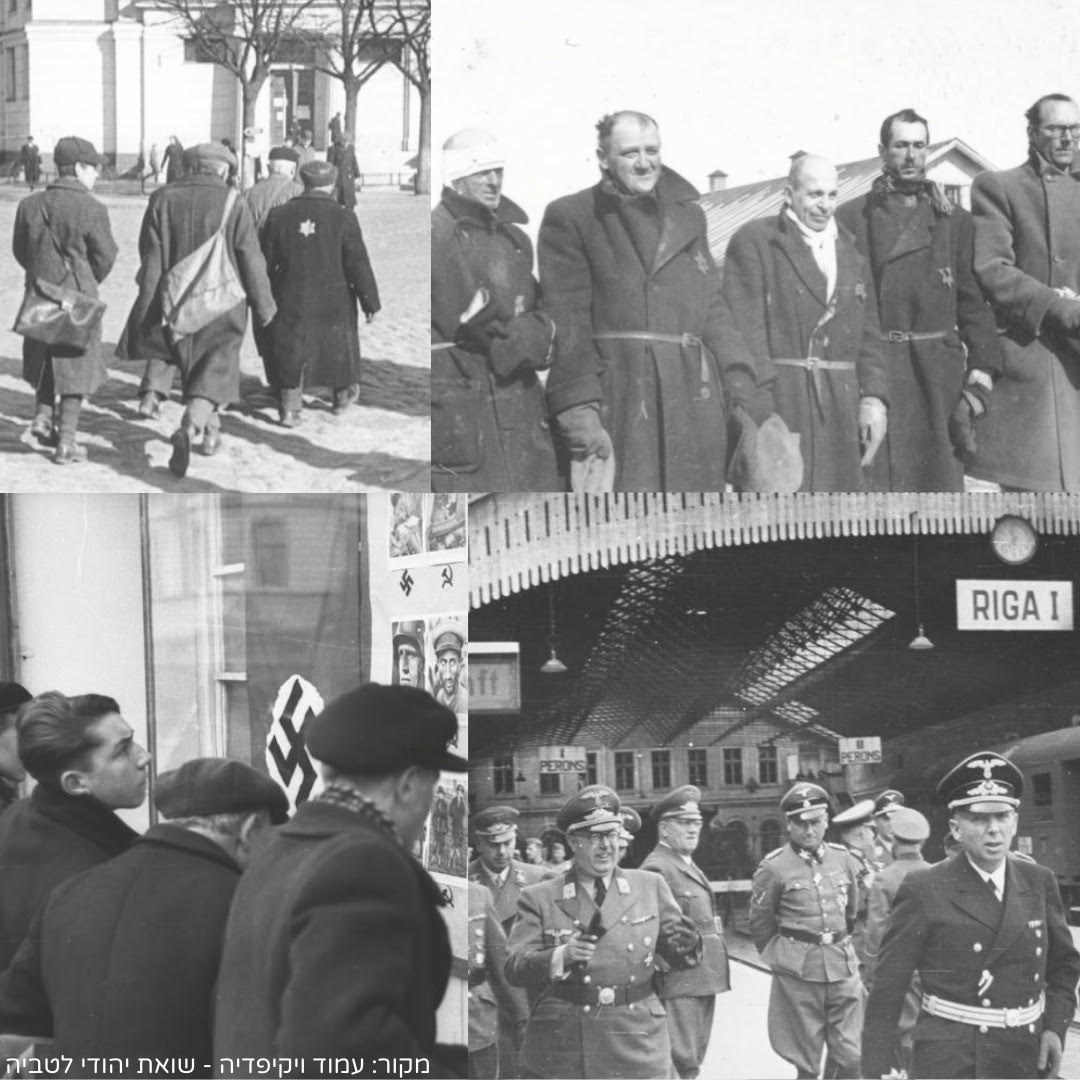
A special March of the Living took place on July 4th, 2022 in Riga – Latvia, commemorating the Holocaust of the nation’s Jews, many of whom were murdered by the Germans and their local collaborators in the summer of 1941.
Although the occupation of Latvia and the murder of Jews began in late June of 1941, Latvia commemorates the Holocaust on July 4th, the day on which Riga’s largest synagogue, the “Gogol Shul”, was destroyed. The synagogue, completed in 1871, was burnt to the ground with over 400 Jews who sought refuge inside the synagogue. On that day the Germans and Latvian nationalists also set fire to about 20 synagogues, some with the people inside, and murdered anyone who tried to escape the flames. Of the 93,000 Jews living in Latvia on the eve of WWII, approximately three-quarters of them – 70000 Jews- were murdered during the Shoah.
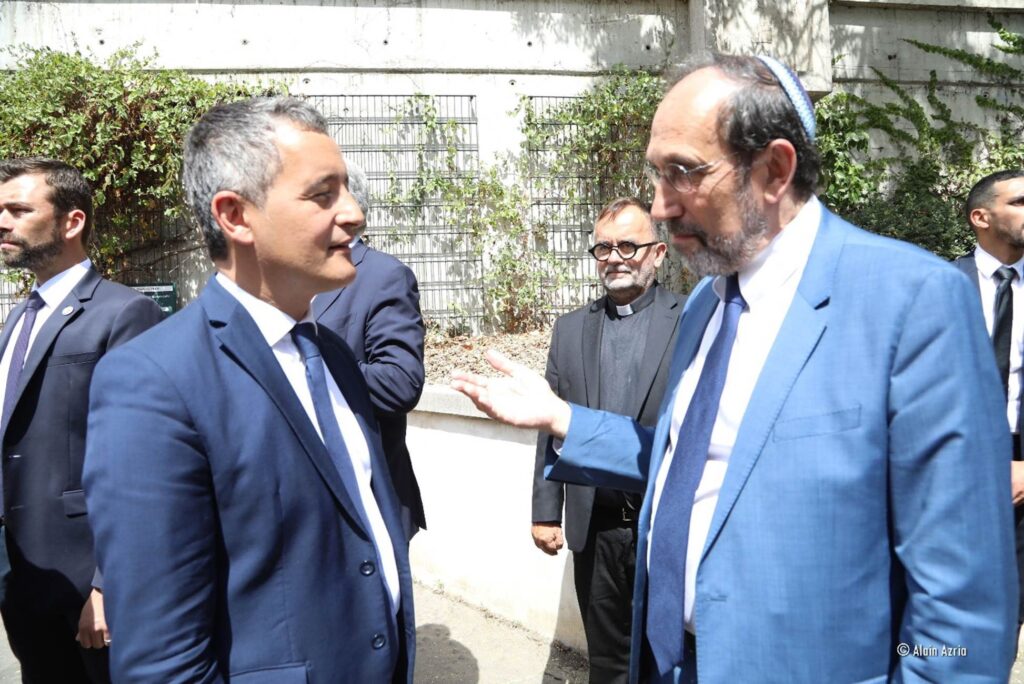
From left to right: French Minister of Interior, Gerald Darmanin and Michel Gourary, Director of EMOTL
The March, from Riga’s Old Jewish Cemetery to the “Gogol Shul”, concluded with an official memorial ceremony attended by Latvian President, Egils Levits and other officials. Michel Gourary, the Director of the European March of the Living attended the March and spoke at the ceremony:
“Preserving the memory of the victims is vital as we are in the final years of having survivors living amongst us. We are working against the clock, and against a constant resurgence of Holocaust denial and distortion. This years’ memorial events – against the background of regional and global turmoil – are of the utmost importance”.
FRANCE: 80TH ANNIVERSARY OF THE TRAGIC ROUNDUP OF THE VEL’ D’HIV’ IN PARIS
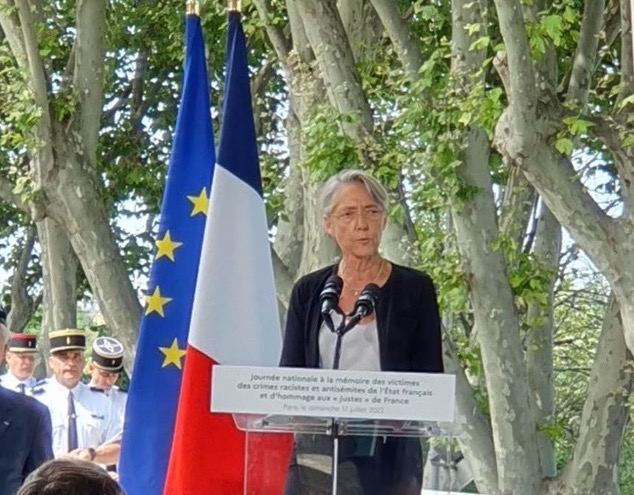
French Prime Minister Elisabeth Borne (credit: EMOTL/G.G)
French Prime Minister Elisabeth Borne: The memory of the Holocaust rests on our youth, we will teach again and again the reality of the genocide and its dark years. There is not a classroom in France where the memory of the Holocaust should not be taught, not a school where it can be challenged…”
On July 16-17, 1942, French police, at the behest of the Nazi allied Vichy France regime, arrested some 13,000 Jews and interned them under inhuman conditions in the Vélodrome d’Hiver sports arena in Paris not far from the iconic Eiffel Tower. The Vélodrome d’Hiver roundup was the largest French roundup and deportation of Jews during the Holocaust. The majority of those arrested and interned at the Vélodrome, where they were held without almost any food, water or sanitary conditions, were deported to Auschwitz where most of them perished. July 17th marks the National Day in memory of the victims of the racist and anti-Semitic crimes of the French State and of tribute to the Righteous in France during the Shoah. This year marks 80 years to the loss of some 75,000 French Jewish residents – many of them foreign nationals – during the Holocaust, roughly 1/4 of France’s Jewish population.
The International March of the Living was officially represented by Michel Gourary, the Director of the European March of the Living Network, at the ceremony organized by the French government in cooperation with the CRIF and other organizations in Paris.
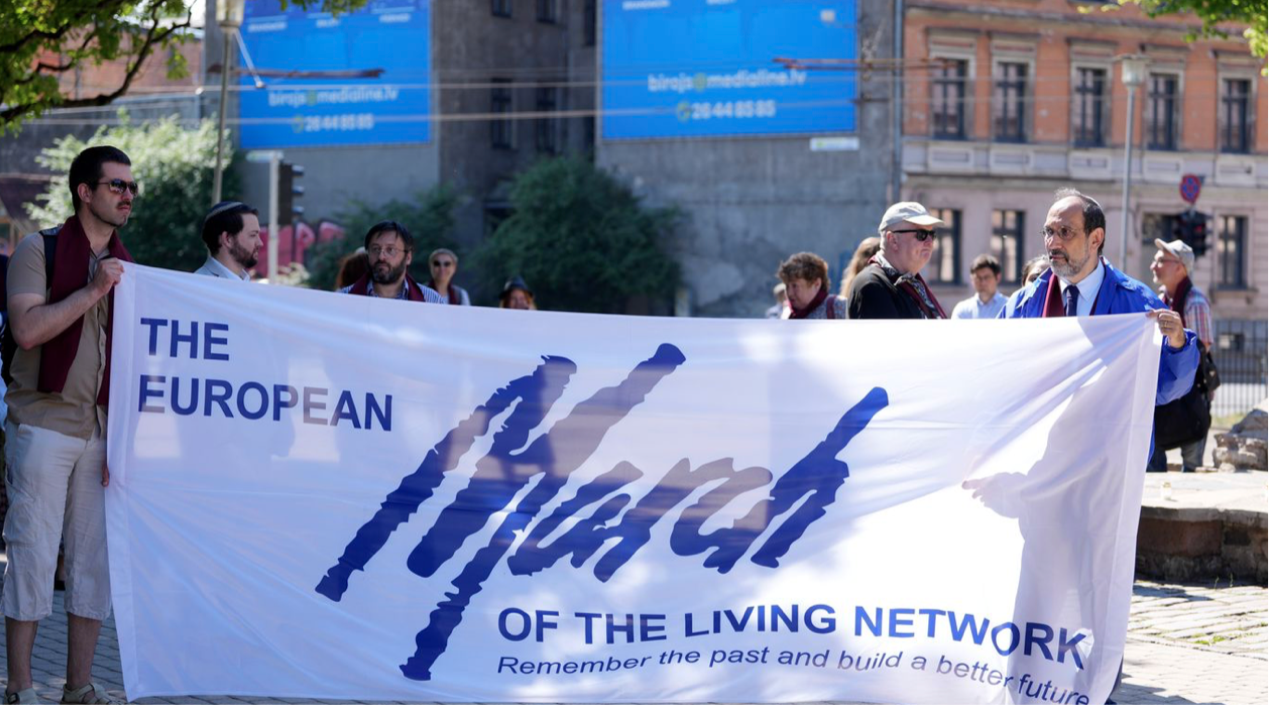
(Credit: Paula Čurkste/LETA)
At the ceremony the new French Prime Minister Elisabeth Borne, the daughter of a Jewish Resistance fighter and Holocaust survivor, said in her official address in presence of Holocaust survivors, the sons and daughters of Jewish deportees, families of Righteous among the Nations, Ministers, Parliamentarians, and leaders of the main Jewish organizations:
“…Right here, more than 13,000 people have been left by France to torment, hatred and death…On July 16 and 17, 1942, the history of the France was marked by a wound that remains bare. It was our laws that imposed the registration of Jews, their banishment. It was our police who searched for and arrested thousands of families regardless of age or state of health. It was our country that let them suffocate here in the heat of July, before a macabre sorting, before their transfer to the Loiret camps or to Drancy, before their deportation to Auschwitz-Birkenau. On those days, the French state went further than the demands of the Nazi occupier, notably by delivering children, sending them to their deaths. On those days, thousands of innocent people were handed over to a fate whose outcome no one among the officials of the French state was unaware of….”
POLAND: MARCHING TO COMMEMORATE THE 80TH ANNIVERSARY OF THE START OF THE LIQUIDATION OF THE WARSAW GHETTO
Holocaust survivor Aleksandra Kaniuka: “As every year, at this time, I’m in this place. In this way, I want to commemorate those who died by being deported to the death camp in Treblinka”.
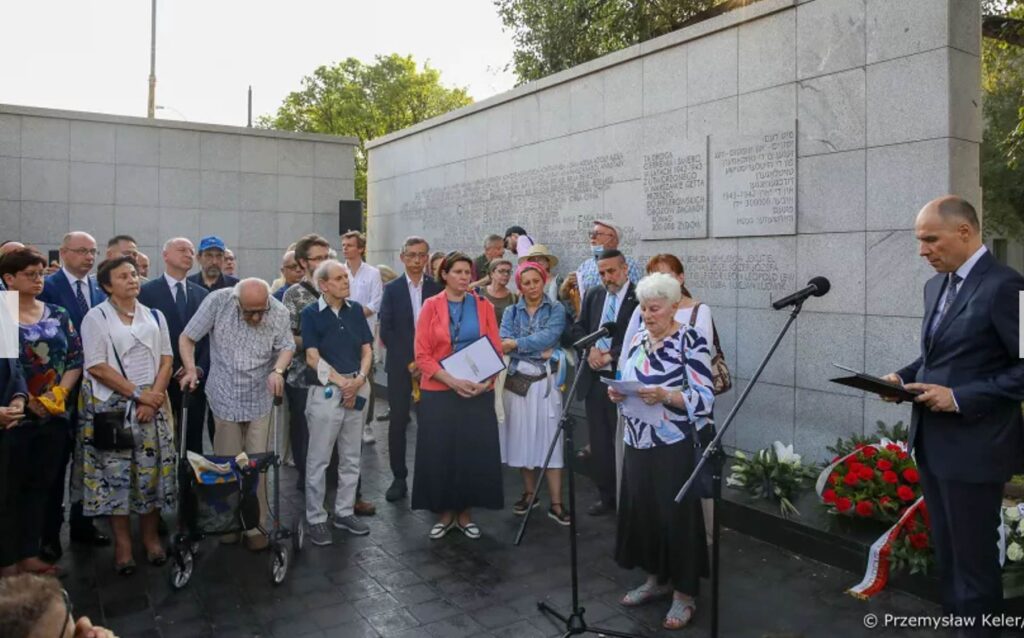
Holocaust survivor Aleksandra Kaniuk at the Umschlagplatz opening ceremony
On July 22, 2022, in commemoration of the 80th anniversary of the beginning of the liquidation of the Warsaw Ghetto, a March of Remembrance was initiated and organized by the Emanuel Ringelblum Jewish Historical Institute (JHI) in cooperation with the Jewish Social Cultural association of Poland (TSKZ), the International March of the Living (IMOTL) and other organizations, which passed through the streets of Warsaw from the Umschlagplatz monument at Stawki Street and travelled the symbolic route “from death to life”.The March ended at Stare Nalewki Street, the center of Jewish Warsaw before the war. This year some 1,500 marchers carried symbolic Ribbons of Remembrance with the names of murdered Warsaw Jews. From July to September 1942, the Germans deported some 265,000 Jews from Warsaw to Treblinka and murdered about 35,000 Jews inside the ghetto during this time period.
The President of the Republic of Poland Andrzej Duda assumed honorary patronage over this year’s series of anniversary events and was represented by Minister Wojciech Kolarski, Secretary of State in the Chancellery of the President of the Republic of Poland.
The International March of the Living (IMOTL) was represented by Michel Gourary, Director of the European March of the Living Network (EMOTL) and by Dudi Abadi, Director of IMOTL operations in Poland.
From left to right: Yacov Livne, Israel Ambassador to Poland, Monika Krawczyk (Director of JHI), Minister Wojciech Kolarski, Secretary of State in the Chancellery of the President of Poland, Ms. Rachel Kesselman (Radomsko Kesselman Museum), Michel Gourary (Director of EMOTL).
Aleksandra Kaniuk, a survivor of the Holocaust, a member of the Association “Children of the Holocaust” said at the opening ceremony: “As every year, at this time, I’m in this place. In this way, I want to commemorate those who died by being deported to the death camp in Treblinka”.
